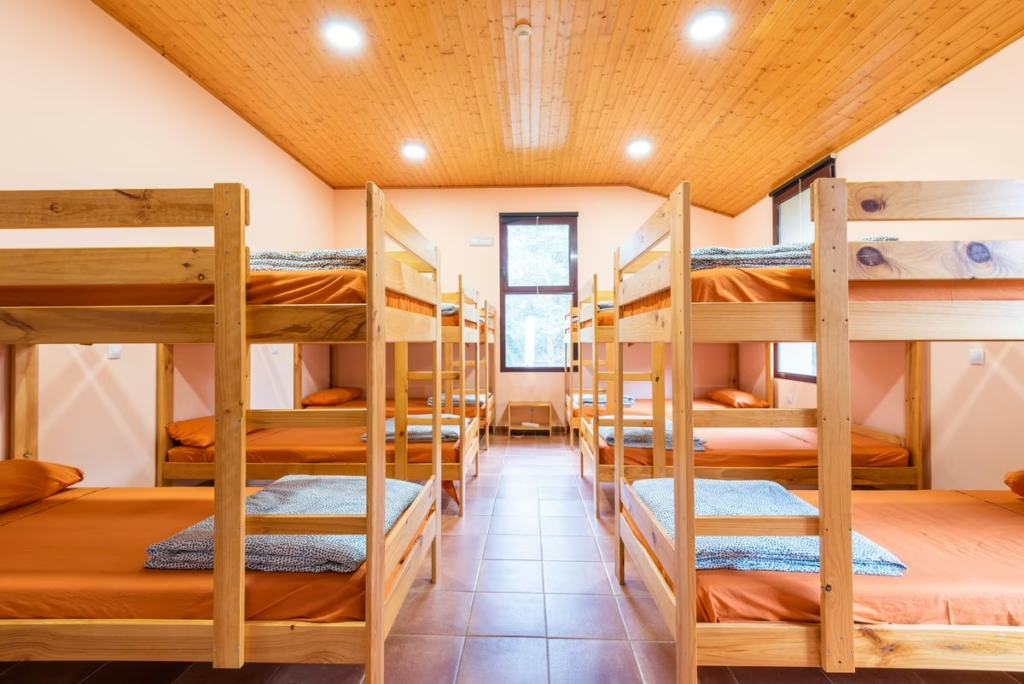A hostel is an affordable and shared type of accommodation mainly intended for pilgrims, travelers or hikers. In the context of the Camino de Santiago, hostels are an essential part of the experience, offering rest, companionship, and a unique atmosphere of camaraderie among people from all over the world.
What is a hostel on the Camino de Santiago
The hostels on the Camino de Santiago are establishments designed specifically to welcome pilgrims walking along the various Jacobean routes. They usually offer shared rooms, bunk beds, communal bathrooms and, in many cases, a shared kitchen or rest area.
Although they are simple lodgings, their main value lies in the hospitality spirit that defines them — the welcoming of pilgrims, a tradition that dates back to the Middle Ages.
Types of hostels
There are different types of hostels along the Camino:
- Public hostels: managed by Jacobean associations, municipalities or parishes. They are usually the cheapest and work on a donation basis or for a symbolic price.
- Private hostels: with more services and modern facilities, managed by individuals or tourism companies.
- Parish or donation-based hostels: preserve the most traditional essence of the Camino, based on free hospitality and human exchange.
Common services
Although they vary by type, many hostels offer:
- Wi-Fi connection
- Laundry and dryer
- Kitchen and dining room
- Bicycle storage
- Lockers
- Tourist information
- Stamp for the pilgrim’s credential
Rules and operation
In most cases, Camino hostels allow only one night’s stay to ensure the rotation of pilgrims who continue their journey. They usually close in the morning for cleaning or maintenance. Some accept reservations, while others operate on a first-come, first-served basis.
The importance of hostels on the Camino de Santiago
Beyond physical rest, hostels represent a space of cultural and spiritual encounter. Pilgrims share stories, experiences and advice with travelers from different countries. This sense of community is one of the most authentic pillars of the Camino de Santiago and one of the reasons many pilgrims return.
